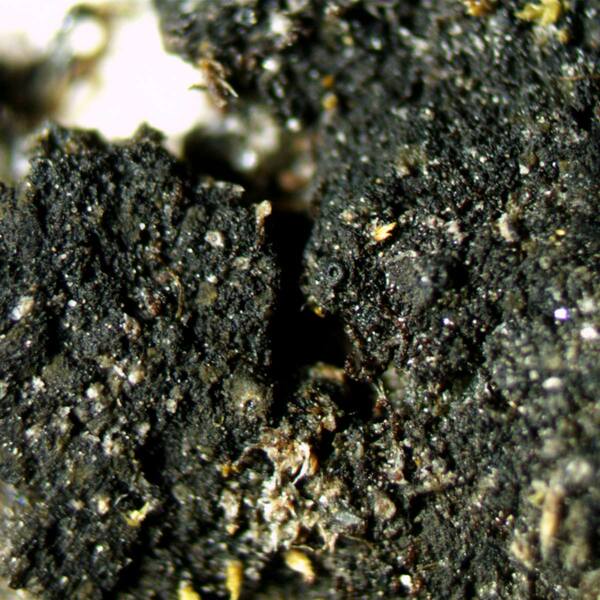Atla wheldonii (Travis) Savić & Tibell
Lichenologist, 40: 280, 2008. Basionym: Polyblastia wheldonii Travis - North Western Naturalist, 23: 240, 1947.
Synonyms:
Distribution: N - Frl (Breuss 2008, Hafellner 2010).
Description: Thallus crustose, episubstratic, subgelatinous when wet, dark brown to black, consisting of 0.02-0.1 mm wide, granular goniocysts, often visible only around the perithecia. Perithecia black, 0.35-0.5(-0.8) mm across, immersed, with only the apex projecting, rarely partly exposed. Involucrellum absent; exciple 35-60 μm thick, brown throughout but paler in innermost part, sometimes forming a short neck in upper part; hamathecium of slender, 75-95 μm long and 1-1.5 μm wide pseudoparaphyses below the ostiole, interascal filaments absent; hymenial gel hemiamyloid, I+ red (+ blue at very low concentrations of I), K/I+ blue. Asci (3–)4–8-spored, ellipsoid to clavate, K/I-, fissitunicate, the wall thickened above when young. Ascospores muriform, brown to dark brown, opaque when mature, ellipsoid to broadly epllipsoid, 70-90(-160) x 33-50(-92) μm, larger in the asci with less than 8 spores. Photobiont chlorococcoid, but verrucose cephalodia with Nostoc frequent. Spot tests: K-, C-, KC-, P-, UV-. Chemistry: without lichen substances. Note: a rare terricolous species of base-rich soil with optimum near and above treeline, so far reported from Scandinavia, Britain, Spain, Austria and Slovenia. The record from the Julian Alps by Breuss (2008) is actually in Slovenian territory, but very close to the border.
Growth form: Crustose
Substrata: soil, terricolous mosses, and plant debris
Photobiont: green algae other than Trentepohlia
Reproductive strategy: mainly sexual
Commonnes-rarity: (info)
Alpine belt: very rare
Subalpine belt: very rare
Oromediterranean belt: absent
Montane belt: absent
Submediterranean belt: absent
Padanian area: absent
Humid submediterranean belt: absent
Humid mediterranean belt: absent
Dry mediterranean belt: absent

Predictive model
Growth form: Crustose
Substrata: soil, terricolous mosses, and plant debris
Photobiont: green algae other than Trentepohlia
Reproductive strategy: mainly sexual
Commonnes-rarity: (info)
Alpine belt: very rare
Subalpine belt: very rare
Oromediterranean belt: absent
Montane belt: absent
Submediterranean belt: absent
Padanian area: absent
Humid submediterranean belt: absent
Humid mediterranean belt: absent
Dry mediterranean belt: absent

Predictive model
 INDEX FUNGORUM
INDEX FUNGORUM
 GBIF
GBIF
 DOLICHENS
DOLICHENS


